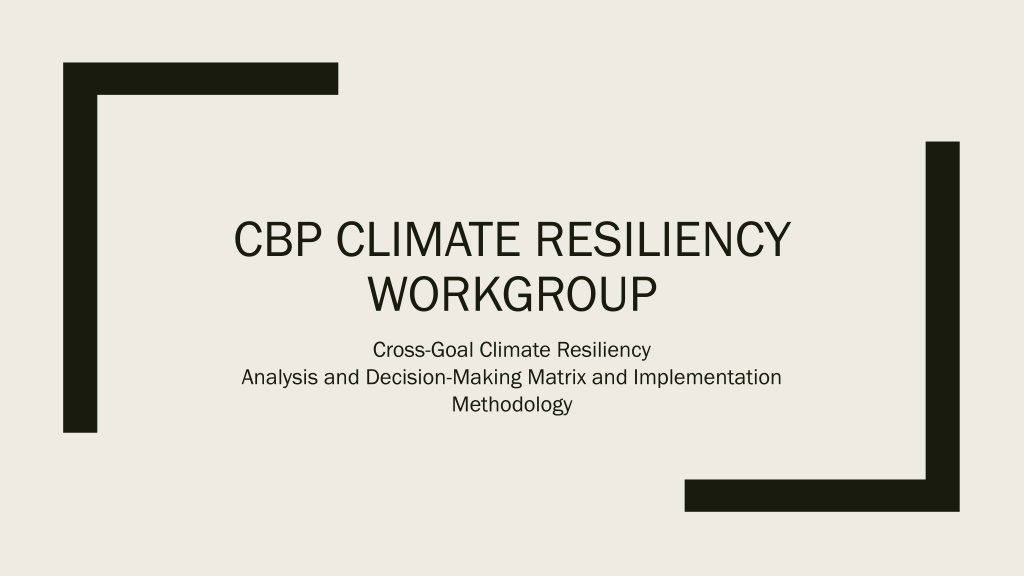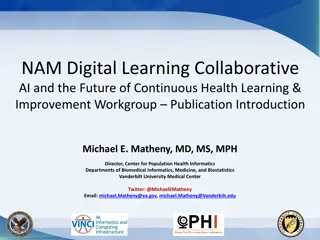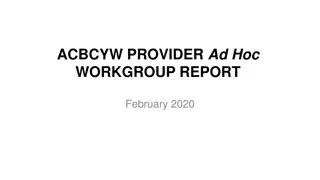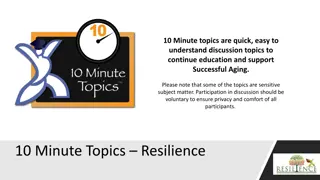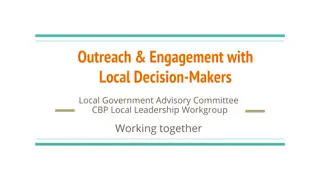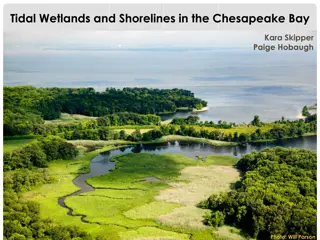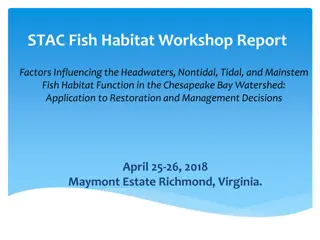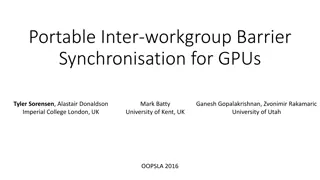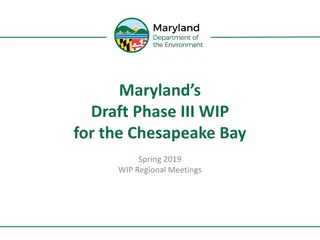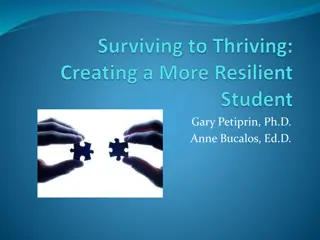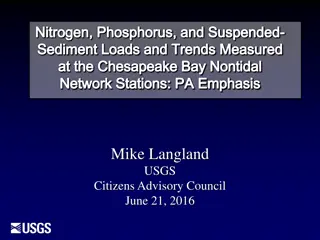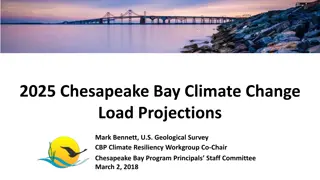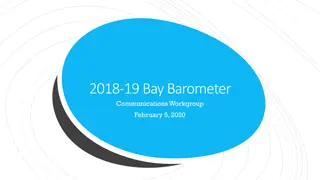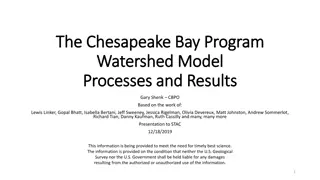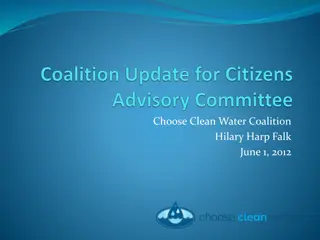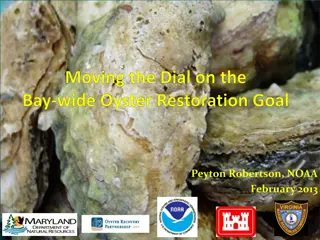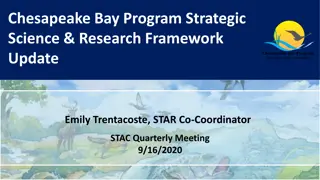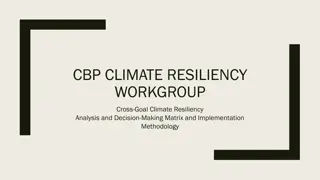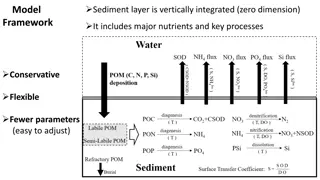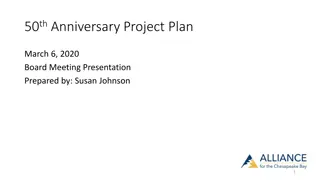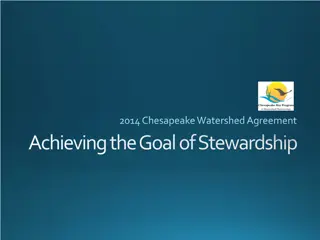Chesapeake Bay Climate Resiliency Workgroup Analysis & Implementation
Increase the resiliency of the Chesapeake Bay watershed against changing climate conditions. Focus on advancing climate change goals, applying climate-smart adaptation planning, and engaging in tailored conservation approaches. Specific goals include wetlands restoration and enhancement. Utilize the CCAP Design Tool for climate-smart design considerations.
Download Presentation

Please find below an Image/Link to download the presentation.
The content on the website is provided AS IS for your information and personal use only. It may not be sold, licensed, or shared on other websites without obtaining consent from the author. Download presentation by click this link. If you encounter any issues during the download, it is possible that the publisher has removed the file from their server.
E N D
Presentation Transcript
CBP CLIMATE RESILIENCY WORKGROUP Cross-Goal Climate Resiliency Analysis and Decision-Making Matrix and Implementation Methodology
Climate Resiliency Goal Increase the resiliency of the Chesapeake Bay watershed, including its living resources, habitats, public infrastructure and communities, to withstand adverse impacts from changing environmental and climate conditions . changing climate conditions are a significant challenge to successful restoration and protection of the Chesapeake Bay and its watershed and recommend a suite of actions to reduce vulnerability over time
Project Goals Advance outcomes from the Chesapeake Bay Agreement with regard to climate change goals Develop a structured, science-based framework through which the principles of climate-smart adaptation planning can be effectively applied to the existing 29 management strategies in the Watershed Agreement Engage one-on-one with GITs to identify, assess, evaluate and revise climate-related elements of individual management strategies
General Approach Tailor the concepts of Climate Smart Conservation Framework to incorporate consideration of climate change vulnerabilities into planned Chesapeake Bay management strategies and restoration actions Utilize CCAP Adaptation Design Tool and framework as a starting point Use 2 workgroups as pilots to develop the approach: Wetlands Protected lands Facilitate a structured approach (e.g., modified SDM) in a set of workshops to work through the process with each pilot workgroup
Wetlands Goal/Outcome Next 2 years (by 2018): Restore 15,762 acres; Enhance 30,000 acres By 2025, Restore 85,000 acres; Enhance 150,000 acres
CCAP Design Tool Developed to apply Climate Smart principles to coral reef adaptation plans, but highly applicable for incorporating climate change vulnerability considerations into Chesapeake Bay management strategies A structured approach, using a series of three related matrices that guide managers/ stakeholders through the process Focuses on developing climate-smart design considerations, two categories of questions related to how climate change is likely to: impact both the stressors being managed by an action; and the effectiveness of the action itself
Interactions with Wetlands Workgroup Identify core steering group Work with core steering group to: Clarify the management/restoration actions of importance Identify and gather relevant Chesapeake Bay climate change vulnerability research/data Discuss relationship/status of other components of the Wetland Workplan (5 management approaches) Compile strategies, actions, restoration/enhancement techniques that are envisioned to achieve the goal/outcome
Project Timeline 2016 2017 Task # Activity/Deliverable May Jun Jul Aug Sep Oct Nov Dec Jan Feb Mar Apr May Jun Jul Aug Sep 1 Conduct literature review 2 Compile existing climate change vulnerability research and data 3 Create Climate Resiliency Analysis and Decision-Making Matrix 4 Prepare and design workshop 5 Conduct pre-workshop calls 6 Conduct first set of facilitated, in-person workshops 7 Prioritize and collect data and information to fill critical gaps 8 Conduct pre-workshop calls 9 Conduct second set of facilitated, in-person workshops 10 Produce synthesis and results write-up
Project Contacts: Zoe Johnson, CBP Technical Lead Susan Julius, EPA Technical Lead Anna Hamilton, Project Manager Jennie Hoffman, Facilitator Hope Herron, Facilitator
